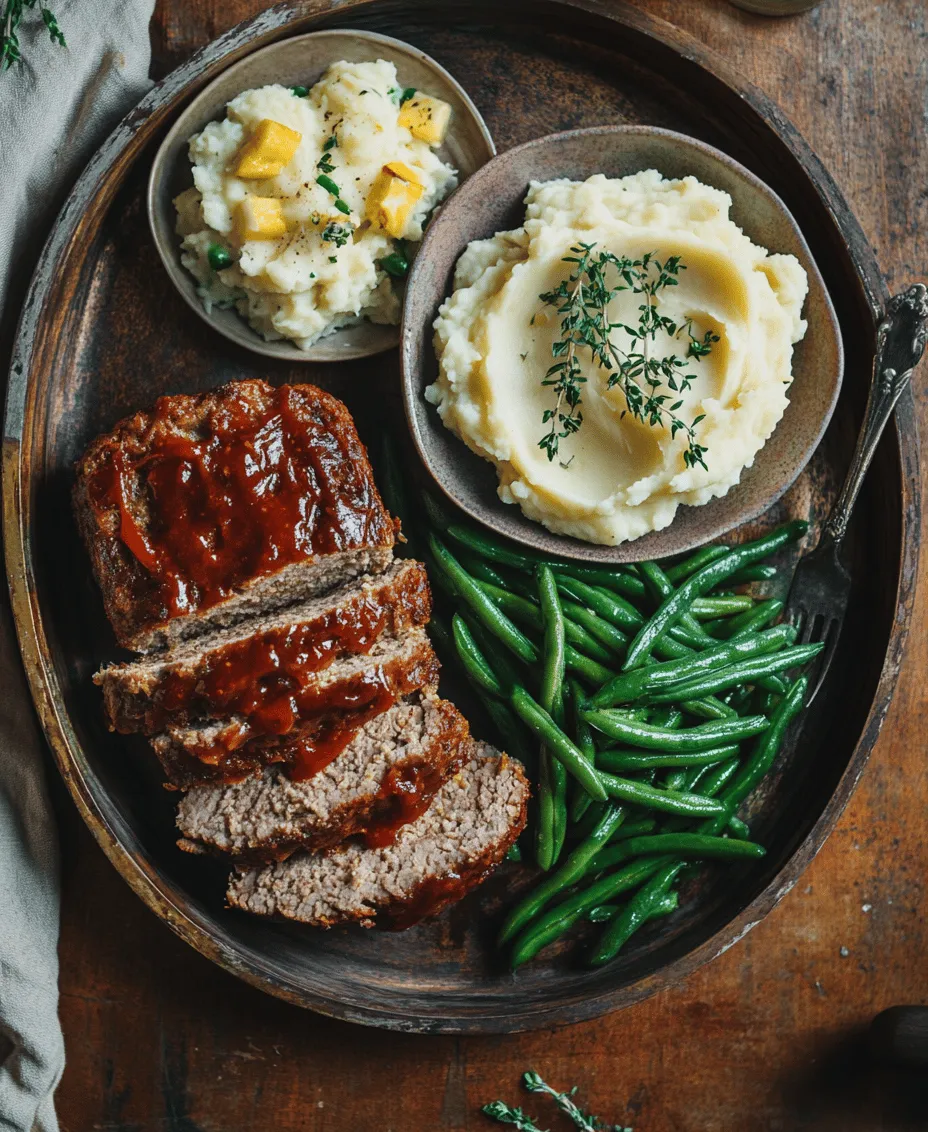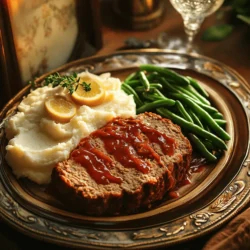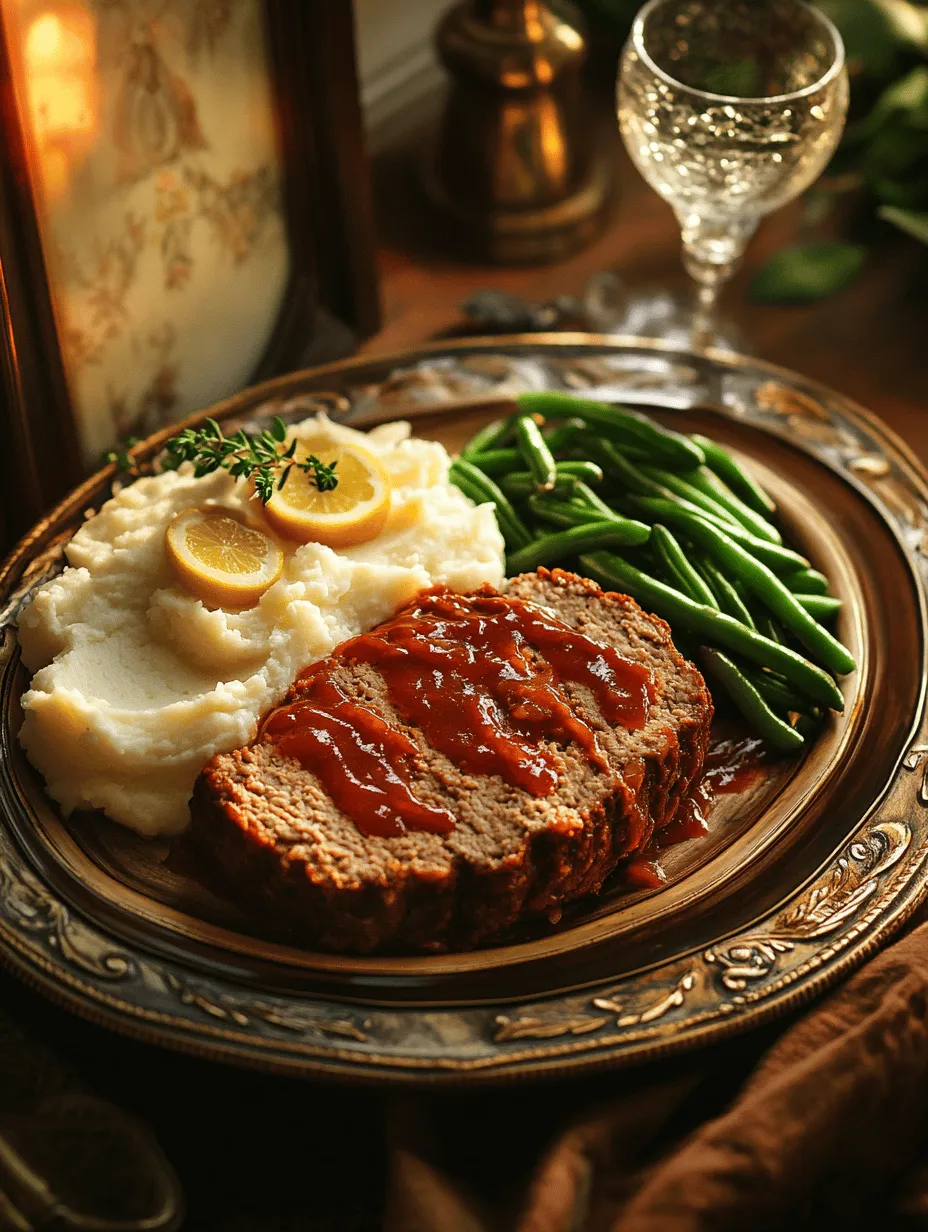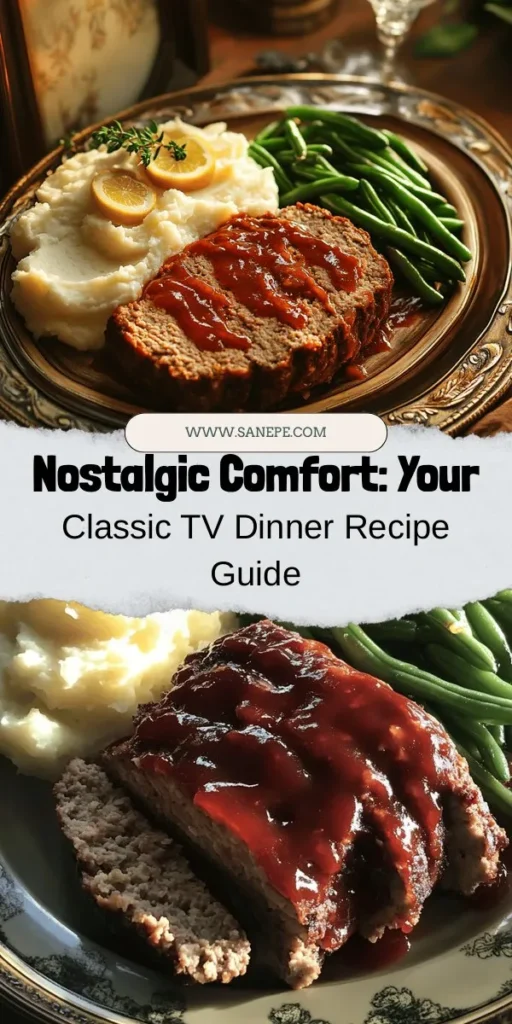Introduction
In a world that’s constantly on the go, the value of classic comfort foods cannot be overstated. These dishes, often steeped in nostalgia, evoke memories of family gatherings, cozy evenings at home, and the simple joy of sharing a meal with loved ones. Among these cherished meals, the Classic Comfort TV Dinner stands out as a quintessential representation of warmth and satisfaction. This dish not only fulfills our cravings for home-cooked goodness but also serves as a reminder of simpler times, where dinner was a gathering event rather than a rushed affair.
As we navigate through our fast-paced lives, the importance of homemade meals has become increasingly significant. They offer a chance to slow down, connect with our culinary roots, and indulge in flavors that nourished our ancestors. The Classic Comfort TV Dinner embodies this sentiment perfectly, combining hearty elements that are both comforting and delicious. In this article, we will explore the origins of this beloved dish, break down its essential components, and guide you through the preparation process to recreate this classic meal in your own kitchen.
Understanding the Classic TV Dinner
The concept of TV dinners dates back to the 1950s, a time when television was becoming a household staple and families were searching for convenient meal solutions. The first-ever TV dinner was introduced by Swanson in 1953, featuring a tray of turkey, cornbread stuffing, peas, and sweet potatoes. This innovation allowed families to enjoy a meal in front of the TV, paving the way for a new era of dining that emphasized convenience over tradition.
Over the years, TV dinners have evolved, offering a variety of cuisines and flavors to match changing consumer preferences. However, the classic version, often featuring meatloaf, mashed potatoes, and green beans, remains a nostalgic favorite. This dish holds a special place in family gatherings and traditions, often served during special occasions or as a comforting weeknight meal. The Classic Comfort TV Dinner captures the essence of home-cooked meals, reminding us of the joy that comes from sharing food with family and friends.
This dish not only satisfies our hunger but also serves as a connection to our past. The flavors and aromas of a Classic Comfort TV Dinner evoke memories of childhood dinners and family recipes passed down through generations. It’s a meal that signifies love, care, and the effort put into creating something special for those we hold dear.
Ingredients Breakdown
To recreate the Classic Comfort TV Dinner, we need to break down its key components: the meatloaf, mashed potatoes, green beans, and an optional dessert of chocolate pudding. Each ingredient contributes to the overall flavor and texture of the meal, making it a comforting and satisfying experience.
The Meatloaf
The centerpiece of the Classic Comfort TV Dinner is undoubtedly the meatloaf. This dish is not just about using any ground beef; the quality of the meat plays a crucial role in the final product. Opting for a higher-fat content ground beef, such as 80/20, ensures that the meatloaf remains moist and flavorful. The addition of breadcrumbs is essential for achieving the perfect texture, providing structure while absorbing moisture from the meat.
Seasoning is vital in developing the flavor profile of the meatloaf. Common ingredients include salt, pepper, onion powder, and garlic powder. Fresh chopped onions and minced garlic add a layer of depth, while Worcestershire sauce provides umami and richness. Each seasoning enhances the meat’s natural flavors, resulting in a dish that is both hearty and comforting.
The Mashed Potatoes
No Classic Comfort TV Dinner would be complete without creamy mashed potatoes. For this dish, russet potatoes are the preferred choice due to their high starch content, which makes them fluffy and light when mashed. The process of achieving the perfect consistency involves more than just boiling and mashing; the addition of butter and cream plays a crucial role. Butter adds richness, while cream provides a velvety texture that elevates the dish to new heights.
For a hint of flavor, some might choose to add roasted garlic or sour cream to the mashed potatoes, enhancing their taste without overpowering the comforting essence of the dish. The key is to balance creaminess with the natural potato flavor, creating a side that is irresistible.
The Green Beans
Adding a vegetable component to the meal not only enhances its nutritional value but also provides a necessary contrast to the richness of the meatloaf and mashed potatoes. Green beans are a classic choice, offering a crisp texture that complements the other elements of the dish.
To elevate the flavor, consider tossing the green beans with a little lemon zest and minced garlic. The acidity from the lemon brightens the dish, while the garlic adds depth. Not only do these ingredients enhance the overall flavor, but they also promote a healthier balance within the meal.
Optional Dessert: Chocolate Pudding
To round out the Classic Comfort TV Dinner, a nostalgic dessert like chocolate pudding can be the perfect sweet ending. Chocolate pudding has a rich history, often serving as a simple yet delightful treat that evokes fond childhood memories. The creamy texture and sweet flavor provide a wonderful contrast to the savory elements of the meal, leaving diners satisfied and happy.
The pudding can be made from scratch or prepared quickly from a box mix, depending on your preference. Regardless of the method, this dessert is sure to bring smiles and complete the comforting experience of the Classic TV Dinner.
Step-by-Step Preparation Guide
Now that we’ve explored the ingredients, let’s dive into the preparation of the Classic Comfort TV Dinner, starting with the meatloaf. Follow these steps to create a flavorful and moist meatloaf that will serve as the highlight of your meal.
Preparing the Meatloaf
1. Gather Your Ingredients: Start by preheating your oven to 350°F (175°C). In a large mixing bowl, combine the following ingredients:
– 1 pound of ground beef (80/20)
– 1 cup of breadcrumbs
– 1/2 cup of finely chopped onion
– 2 cloves of minced garlic
– 1/4 cup of milk
– 1 large egg
– 2 tablespoons of Worcestershire sauce
– 1 teaspoon of salt
– 1/2 teaspoon of pepper
2. Mix the Ingredients: Using your hands or a wooden spoon, gently mix all the ingredients together until just combined. Be careful not to overmix, as this can lead to a dense meatloaf.
3. Shape the Meatloaf: Transfer the mixture to a lined baking dish or a loaf pan. Shape it into a loaf, ensuring the top is slightly domed for even cooking.
4. Prepare the Glaze: For a delicious glaze, mix together 1/4 cup of ketchup, 2 tablespoons of brown sugar, and 1 tablespoon of mustard. Spread this mixture evenly over the top of the meatloaf.
5. Bake the Meatloaf: Place the meatloaf in the preheated oven and bake for about 1 hour, or until the internal temperature reaches 160°F (70°C). Once done, allow it to rest for about 10 minutes before slicing.
As you prepare the meatloaf, you can also begin boiling the russet potatoes for the mashed potatoes so that everything comes together seamlessly.
Stay tuned for the next part of the article, where we will continue with the preparation of the mashed potatoes, green beans, and the optional chocolate pudding, all of which will complete your Classic Comfort TV Dinner experience.

Detailed Instructions on Mixing and Shaping Meatloaf
To create a classic meatloaf that serves as the star of your Comfort TV Dinner, start by preparing the meat mixture. In a large mixing bowl, combine 1 pound of ground beef with 1/2 pound of ground pork or turkey for a balanced flavor. Add one cup of breadcrumbs, which will help bind the meatloaf and give it a satisfying texture. Incorporate one small finely chopped onion, two cloves of minced garlic, and one beaten egg to enhance the moisture and richness.
Next, season the mixture with salt, pepper, and a teaspoon of Worcestershire sauce for depth. For additional flavor, consider adding a tablespoon of dried thyme or oregano. Use your hands to mix the ingredients gently; avoid overmixing as it can lead to a dense meatloaf. Once combined, shape the mixture into a loaf, approximately 9 inches long and 5 inches wide, ensuring an even thickness throughout for uniform cooking.
Place the shaped meatloaf in a lightly greased baking dish or on a lined baking sheet. Before baking, spread a thin layer of ketchup or barbecue sauce on top for a flavorful glaze that will caramelize during cooking.
Tips for Checking Doneness and Achieving the Right Texture
To ensure your meatloaf is cooked to perfection, monitoring its internal temperature is essential. Use a meat thermometer to check the center of the loaf; it should read 160°F (71°C) when fully cooked. If you prefer a firmer texture, cooking it to 165°F (74°C) is a good option.
Another way to check for doneness is by making a small cut in the center to see if the juices run clear. If they are still pink, return the meatloaf to the oven and check every 5 minutes until done. Let the meatloaf rest for 10 minutes after removing it from the oven; this allows the juices to redistribute, keeping the meatloaf moist and flavorful.
Making the Mashed Potatoes
Mashed potatoes are a critical component of any classic TV dinner. To start, select the right potatoes—Yukon Gold or Russet potatoes work best for creamy mashed potatoes. Peel the potatoes and cut them into uniform chunks, approximately 1 to 2 inches in size. This ensures even cooking.
Bring a large pot of salted water to a boil, then add the potato chunks. Boil for 15 to 20 minutes until fork-tender. To check, simply insert a fork into a piece; it should slide in easily. Once cooked, drain the potatoes well and return them to the pot to allow excess moisture to evaporate.
For the perfect creamy texture, use a potato masher or ricer to mash the potatoes. Gradually incorporate 1/2 cup of warm milk or cream, along with 4 tablespoons of butter. Season with salt and pepper to taste, and consider adding a pinch of garlic powder, sour cream, or freshly chopped chives for extra flavor.
Techniques for Boiling and Mashing Potatoes Effectively
To achieve light and fluffy mashed potatoes, avoid overworking them. Over-mashing can lead to a gluey texture, which is not desirable. Instead, mash gently and incorporate the milk or cream gradually. If you prefer an even creamier finish, you can use an electric mixer on low speed, but be cautious not to overmix.
Additionally, experimenting with different types of fats—like olive oil or flavored butters—can elevate your mashed potatoes. For a healthier twist, consider substituting some of the butter with Greek yogurt, which adds creaminess without all the calories.
Sautéing the Green Beans
Green beans provide a fresh and vibrant contrast to the richness of meatloaf and mashed potatoes. Begin by washing and trimming the ends of your green beans. For best results, blanch them in boiling water for about 2 minutes to enhance their color and tenderness, then immediately plunge them into an ice bath to halt cooking.
Once cooled, drain the beans and heat a tablespoon of olive oil in a skillet over medium-high heat. Add the green beans and sauté for about 5 to 7 minutes until they are bright green and slightly tender. Toss occasionally to ensure even cooking. For added flavor, you can include minced garlic or shallots during the last 2 minutes of cooking.
Importance of Timing and Temperature in Achieving the Perfect Sauté
Timing is key when sautéing green beans to achieve the perfect texture. Aim for a slight crunch, which adds a delightful contrast to the meal. If you prefer a softer texture, sauté for a few extra minutes but be careful not to overcook, as they can become mushy and lose their vibrant color.
Consider experimenting with various seasonings: a sprinkle of red pepper flakes adds heat, while a squeeze of lemon juice brightens the flavor profile. For a more indulgent option, toss the sautéed beans with toasted almonds or walnuts for an added crunch.
Assembling the TV Dinner
Once all components of your Classic Comfort TV Dinner are cooked, it’s time to assemble. Presentation can elevate the dining experience significantly. Start with a generous scoop of creamy mashed potatoes placed at the center of your plate. Slice the meatloaf and fan out the slices next to the mashed potatoes, allowing the delicious glaze to shine.
Arrange the sautéed green beans on the opposite side of the plate for a colorful contrast. Consider adding a sprig of fresh parsley or a sprinkle of paprika for garnish, which adds visual appeal.
Suggestions for Serving Sizes and Portion Control
Portion control is essential, especially if you’re preparing meals for a family. A standard serving size for meatloaf is about 4 ounces per person, while mashed potatoes can be served in 1/2 cup portions. For green beans, aim for about 1 cup per serving. This balance ensures that each component complements one another without overwhelming the plate.
Nutritional Information
When prepared as described, the Classic Comfort TV Dinner can provide a balanced meal. Here’s a breakdown of the nutritional values for each component:
– Meatloaf (4 oz): Approximately 250 calories, 18g protein, 20g fat, and 0g carbohydrates.
– Mashed Potatoes (1/2 cup): Approximately 120 calories, 3g protein, 3g fat, and 20g carbohydrates.
– Sautéed Green Beans (1 cup): Approximately 44 calories, 2g protein, 0g fat, and 10g carbohydrates.
This meal offers a total of around 414 calories. It is rich in protein, providing essential amino acids, while the potatoes offer carbohydrates for energy. The green beans add fiber and vitamins such as A, C, and K, contributing to a well-rounded meal.
Discussion on How This Meal Fits into a Balanced Diet
Incorporating a homemade TV dinner into your diet promotes healthier eating habits. Unlike store-bought alternatives, this meal allows for customization of ingredients and portion sizes, ensuring you know exactly what you’re consuming. Preparing meals at home often leads to fresher ingredients, reduced sodium content, and an overall healthier approach to dining.
The Benefits of Homemade Meals Versus Store-Bought Alternatives
Homemade meals offer numerous advantages over their store-bought counterparts. They typically contain fewer preservatives and additives and allow you to control the quality of ingredients. Furthermore, preparing meals at home can be a therapeutic process, providing an opportunity to bond with family and create cherished memories through cooking together.
Cultural Significance and Modern Adaptations
The TV dinner has long been a staple in American dining culture, evolving since its inception in the 1950s. Initially created for convenience, it has transitioned into a nostalgic comfort food that brings families together. Today, modern adaptations include vegetarian and gluten-free options, allowing everyone to enjoy this classic dish.
Exploration of How the TV Dinner Has Influenced American Dining Culture
The TV dinner represents a shift in how families interact during mealtime. With busy schedules, the traditional family dinner has sometimes been replaced by quick, pre-packaged meals. However, the resurgence of home cooking emphasizes the importance of sharing meals, rekindling connections, and fostering a sense of community.
Modern Twists on the Classic Recipe for Dietary Preferences
For those with dietary restrictions, consider substituting ground meat with lentils or chickpeas for a vegetarian option. To make it gluten-free, use gluten-free breadcrumbs or oats in the meatloaf. These adaptations maintain the comforting essence while accommodating different dietary needs.
Ideas for Pairing with Beverages and Side Dishes to Enhance the Dining Experience
To enhance your meal experience, consider pairing your Comfort TV Dinner with a light-bodied red wine, like Pinot Noir, which complements the savory flavors of the meatloaf. Alternatively, a crisp, refreshing iced tea can provide a delightful contrast. For side dishes, a simple garden salad or a fresh fruit platter can add variety and freshness to your meal.
Conclusion
The Classic Comfort TV Dinner is more than just a meal; it’s a nostalgic embrace of warmth and familial connection. Preparing and sharing this dish allows you to relive cherished memories while creating new ones with loved ones. As you gather around the table with this homemade comfort food, remember the joy of traditional recipes that foster togetherness and lasting memories. Embrace the art of home cooking and enjoy the satisfaction of serving a meal made with love and care.


